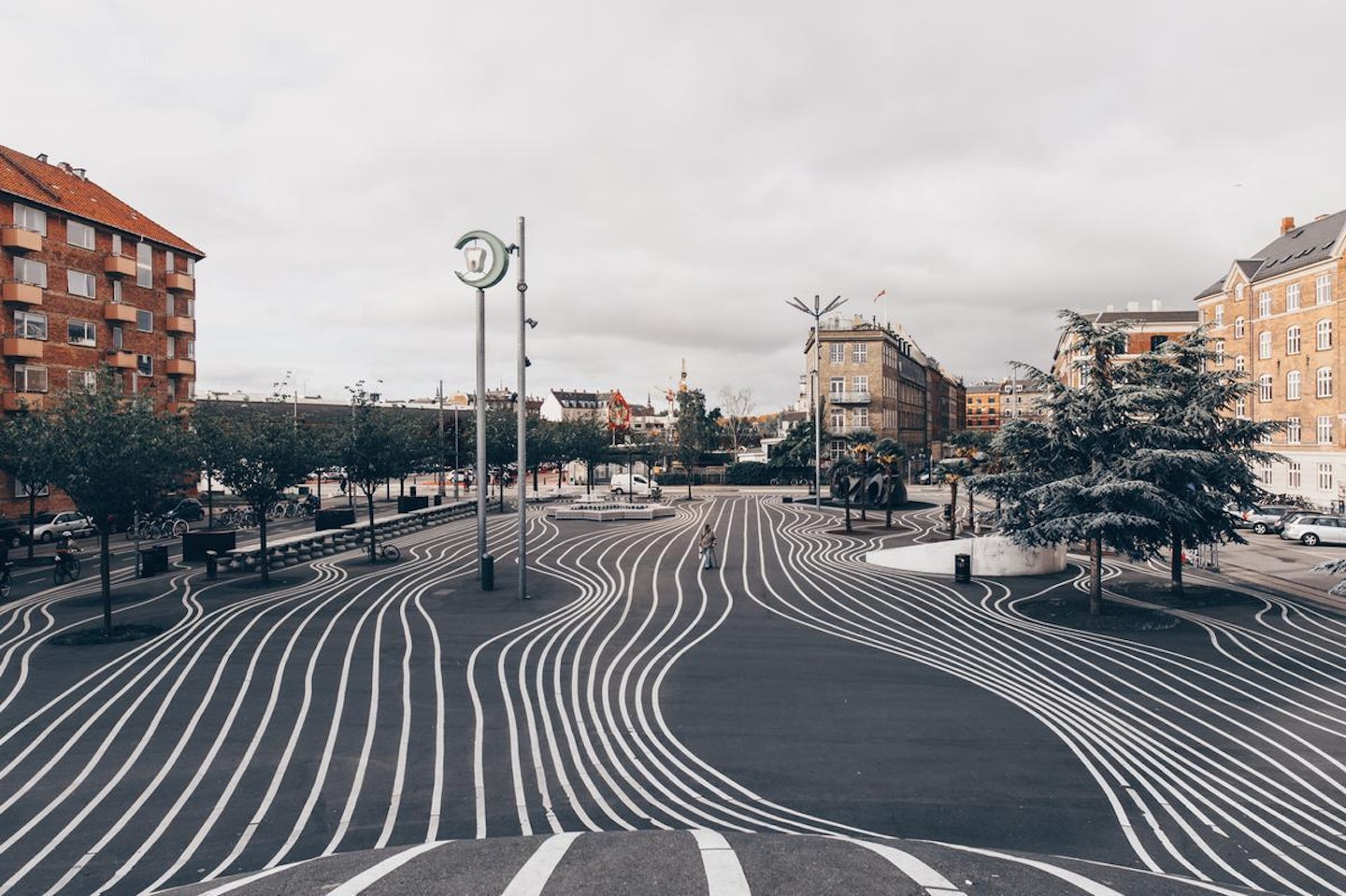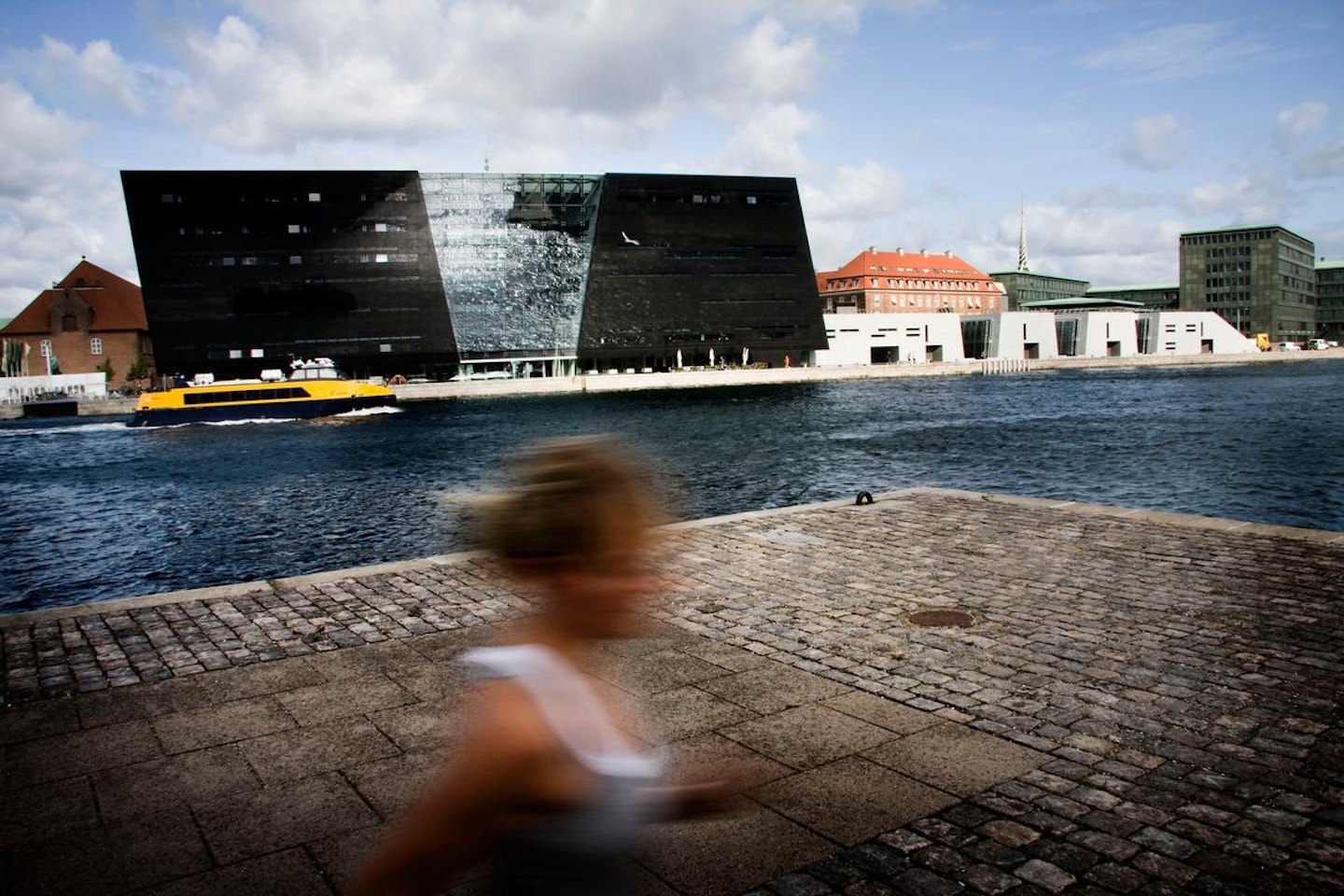A Visual Travel Guide to Copenhagen – By designer Johanne Lian Olsen
Gå til innholdetJohanne Lian Olsen is currently based in London where she works at SocioDesign, but prior to London she lived in Copenhagen, which she knows in and out. We asked her to give us her best tips to the city!
Idea & editing: Christina Skreiberg
Johanne is an internationally experienced graphic designer working within type design, editorial design and illustration. She is additionally trained as a photographer, and focuses on both print and digital media, from initial concept development to art working. Her clients include international brands such as IKEA, NIKE and The Unseen.
Superkilen #
An area in Copenhagen that has gotten quite a lot of attention because of its experimental public space and planning is Superkilen, a park in the north west of the city centre. Designed in a collaboration between the arts group Supeflex, Bjarke Ingels Group (BIG) and Topotek1, this park feature an eclectic mix of features, such as a fountain from Morocco, sculptures from Japan and large scale Russian signs. The area this park is located in, Nørrebro, is quite diverse, and the designers set out to reflect this by treating the park as ‘a world exhibition filled with interesting things’, and to represent the nationalities of every local resident. The park is divided into three areas: The Red Square, The Black Market and the Green Park. The Red Square is decorated with red-toned geometric patterns, contains cafés and feels modern and urban. The Black Markets’ ground are painted with white lines that creates almost aerodynamic patterns that curve around the benches and fountain. The Green park is a park for walking the dog, picnics and sports. Bring your camera as this area offers some great photo opportunities!

Klikk for å se bildet "1 Superkilen Martin Heiberg 1200Px" i full størrelse
Foto: Martin Heiberg
Architecture in Christiania and the houseboats nearby #
Christiania attracts a lot of tourists because of its free-spirit culture and open sale of drug, but if you venture further into the area you will find some great experimental architecture, mainly developed under the idea of ‘architecture without architects’. Ordinary building restrictions did not seem to be a consideration in Christiania, and in the area you find futuristic spaceships, sustainable buildings, buildings made out of what material was available during the process, or buildings made from architecture students volunteering to try our new ideas. Now the government try to control the development with impending rules and regulations - such as the new law that nothing new can be built except roofing. The inhabitants solution is to make houses entirely out of roofing… In the area around Christiania you find some beautiful house boats for inspiration, some small and some matching the size of an ordinary house. Here you can see converted ferries, a three storey boathouse and some that looks like shipping containers. I love exploring this whole area, as it feels like I find new, hidden gems every time I visit, at the same time as being a nice relaxing weekend stroll.
Designmuseum Danmarks’ Poster Collection #
When in need of some inspiration The Design Museum is an obvious choice living in Copenhagen. What is not that well known to the visitors is that the Design Museum has a great poster collection not open to the general public. If you plan your visit and make an agreement with the Museum beforehand, you will be able to visit the collection archived in the attic above the Museums’ library (which is also a must-see, but expect to be ‘shushed’). The Design Museum has since its founding in the 1890s collected posters, and the collection documents commercial, cultural, and political developments in poster history both in Denmark and around the world, from the boom in posters in the 1800s to today. And all of the stars of poster history are represented. The curator of the department will be able to find posters relevant to the subject you are interested in, and is very knowledgeable of both printing techniques and cultural history. (https://designmuseum.dk)

Klikk for å se bildet "3 Design Museum Pernille Klemp" i full størrelse
Foto: Pernille Klemp
Bellevue Beach and Skovshoved Petrol Station #
If you like beautiful architecture and want to escape the city for a few hours, head north of the city along the coast. Bellevue beach is one of the most popular beaches in the Copenhagen area, on the northern outskirts of the city. The Beach is a sandy beach, approx. 700m long, and feature characteristic blue-striped lifeguard towers and a geometric kiosk, all designed by the Danish architect and furniture designer Arne Jacobsen in the 1930s. The beach is used by everybody – from young families to nudists, they all share the same space (this is Denmark after all). If you take the coastal road up to the beach you will pass the Skovshoved Petrol Station designed by the same man. The functionalist style Petrol Station built in the early 1930s is still in operation. Whilst the pumps still functions as a petrol station, the building now functions as a cafe. The roof of the station is oval-shaped, hence the nickname ‘The Mushroom’, and is illuminated at night to highlight the beautiful designed building.
National Gallery of Denmark (Statens Museum for Kunst) #
This is one of the places in Copenhagen that I know will do the job if I need some inspiration. The museums’ collections spans from over seven centuries, from early renaissance to current art. Especially the modern collection with its paintings, installations and performance art kickstart the old imagination. Not only is the collection great, the architecture of the museum is equally beautiful. The old part is a classic museum-building, just as you would expect, but the newer addition is connected by floor to ceiling glass, doing a great job in separating the collections (classic and modern) as it physically changes the context. http://www.smk.d

Klikk for å se bildet "5 Statens Museum For Kunst Sm" i full størrelse
Foto: Statens Museum For Kunst
Kunsthal Charlottenborg #
The bookshop, Charlottenborg Art Books, found at the entrance of the art hall, has a great curated selection of both artist’ books and general art books on art, design and architecture. If you want to dive into experimental book designs from Europe this is the place to visit. https://kunsthalcharlottenborg...

Klikk for å se bildet "6 Kunsthall Charlottenborg" i full størrelse
Foto: Kunsthall Charlottenborg
Zoologisk museum #
Sometimes it is great to look at surreal looking things to set the imagination going. This is an slightly old-school museum with traditional ways of presenting the wast collection, but I personally like that. This museum is a part of the Natural History Museum of Denmark, and has a permanent exhibition ‘From pole to pole' which show animals from around the world. The collection manifests that there is so much to know about the world and who we share it with, and it really sets your mind working. Get inspired by geometric patterns on seashells, colours of birds or scales of reptilians. The museum has many important remains of recently extinct birds in storage, including the eyes and internal organs of the last two great auks, several specimens of the pied raven, and one of only two known complete skulls of the dods that were taken to Europe in the 17th century. zoologi.snm.ku.dk
Conservation department at the Black Diamond Library #
If you apply in time you might get access to the closed collection of handprinted publications all the way back to the medieval age. Under surveillance you will be able to look at the most beautiful handmade books, and special prints. Seeing these culturally important works makes you see your own practice in a new perspective. A lot of the collection is digitalised and available online, so if you are not able to get access you can go on a tour in the comfort of your home instead!
Check out some of Johannes work here, and follow her here: http://www.lianolsen.com





